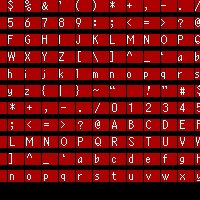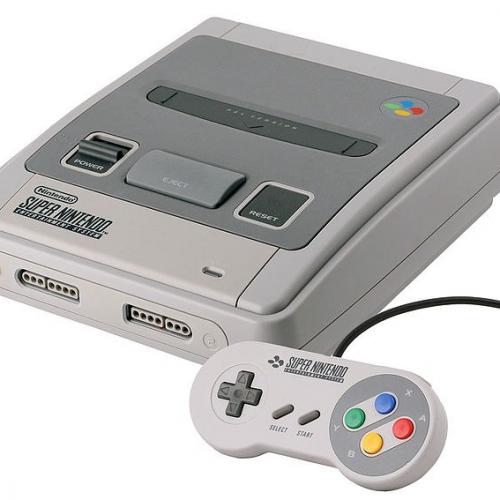Divide by 10 in 68k-asm
Larry Battraw wrote:
What do you need this for? If it is for binary to decimal conversion, there is a better way that doesn't use any divides, multiplies, or table lookups. This better method is also faster unless you have a fast hardware divide.Please enlighten us with what this method is! I have yet to come across a satisfactory way to do such a thing...
I'll first describe how and why this algorithm works. Then I'll include a code fragment implementing the core of the algorithm. Lets start with an example. A binary value can be expressed as the sum of the value of each non-zero digit. Like this:
%10100010 = 128 + 32 + 2If the addition (128 + 32 + 2) is carried out in BCD, then it is simple to come up with the decimal value 162. A general solution is this:
num = num[7] * 2^7 + num[6] * 2^6 + num[5] * 2^5 + ... + num[0] * 2^0Now you are probably thinking you need a table of the powers of 2 in BCD and that you need to do many multiplies (in BCD, no less!). Lets perform some algebra on the equation:
num = (((num[7] * 2 + num[6]) * 2 + num[5]) * 2 + ... num[1]) * 2 + num[0]The powers of two are no longer needed. And multiplication by two is the same as adding a value to itself. Thus, each step becomes this:
result <= result + result + num[n]The 680x0 happens to have an instruction that does just this operation on BCD values!
ABCD.B D0,D0 ; D0 <= D0 + D0 + XThus, all that is needed is to shift each binary bit from msb to lsb into the X flag and then include it in the BCD result.
This same algorithm can be used to convert from any radix to any other radix. Lets try converting from decimal back to binary:
162 = 100 + 60 + 2 = 1 * 100 + 6 * 10 + 2 * 1 = (1 * $A + 6) * $A + 2In this case, the multiplies and adds are carried out in binary (the destination radix). This probably looks just like any standard decimal to binary conversion function.
Performance of the binary to decimal conversion can be improvde by skipping any leading zero bits before starting the BCD doubling stage. This code example also uses an end flag bit directly in the value being converted to cause the proper number of iterations.
... ;Enter with binary value in D0
CLR.B D1
CLR.B D2
CLR.B D3
CLR.B D4
CLR.B D5
NEG.L D0 ;Check for zero
BEQ.S @2
NEG.L D0 ;Restore value and set X
@0 ADDX.L D0,D0 ;Left align value
BCC.S @0
@1 ABCD.B D1,D1 ;Double and add X
ABCD.B D2,D2
ABCD.B D3,D3
ABCD.B D4,D4
ABCD.B D5,D5
ADD.L D0,D0 ;Next bit to X
BNE.S @1
@2 ...Lets compare execution speed versus an algorithm that uses divides: For each of about 32 bit positions, a software divide needs to shift the divisor or dividend, do a trial subtract, branch conditionally, shift the result and insert a 1 or 0 result bit, and finally reloop. This is five (or more) instructions which need to be repeated about 32 times. The above code fragment has seven instructions repeated as many as 32 times. However, the divide method only cranks out one decimal digit whereas the ABCD method produces all ten! (They do however need to be unpacked from BCD into ASCII and leading zeroes may need to be suppressed.)
I first used this algorithm on a Z80 where divides are quite difficult. It can be easily implemented on any CPU that has BCD capabilities (6502, 80x86, etc.) It can even be done on RISC CPUs which usually lack an ABCD instruction because such an add is easy to simulate with some ANDs, ORs, and shifts.
Ludis Langens
ludis@netcom.com
BIN2DEC.S
;This source code was written by Greg Garner on a Commodore Amiga.
;I release this source code to the public domain with the restraint
;that my name be included in any source this is used in.
;Binary to decimal
;convertor. ;Call this with word to convert in D0.
;And address of Free memory to put BCD
;String at in A0.
Bindec Move.b #' ',D1 ;Assume we have a positive binary value.
Tst.l D0 ;See if we have a negatice number.
Bpl Notneg
Move.b #'-',D1 ;Put a minus sign in front of number.
Neg.l D0 ;Convert it to a positive number.
Notneg Move.b D1,(A0)+ ;Save the sign of the BCD number.
Adda.l #$0A,A0 ;Point to 1 past end of string area.
Move.b #$00,(A0) ;Make sure the string is NULL terminated.
Move.w #$09,D6 ;Count register for highest number digits.
Bcdloop Move.l #10,D1 ;Divide by ten to find remainder.
Bsr Londivu ;D0=D0/D1. Remainder in D1, ans in D0.
Move.b D1,-(A0) ;Move Binary remainder to BCD area.
Add.b #'0',(A0) ;Adjust it to ASCII.
Dbra D6,Bcdloop ;Do the division until done.
Rts
;Binary to ASCII hex string. Call with long word in D0 and string addr in A0.
Binhex Move.l #$07,D1 ;Do 8 Hex digits.
Move.b #$20,(a0)+ ;Start with ascii spaces.
Move.b #$20,(a0)+
Add.l #8,A0 ;Point to end of string.
Move.b #$00,(a0) ;Terminate with a 0 hex.
Hexloop Move.b D0,D2 ;Get lo byte.
And.b #$0F,D2 ;Look at lo order nibble.
Cmpi.b #$0a,D2 ;Is the nibble>=A?
Bcc Hexalph
Ori.b #'0',D2 ;Convert it to 0-9 ascii.
Bra Hexskip
Hexalph Add.b #'A'-10,D2 ;Convert it to Alpha digit.
Hexskip Move.b D2,-(A0) ;Save digit
Asr.l #$04,D0 ;Shift it right 4 bits.
Dbra D1,Hexloop
Rts
;32 bit division. D0/D1, answer in D0, remainder in D1.
;This routine uses the shift and subtract algorythm.
;Unsigned division.
Londivu Move.l #$00,D7 ;Start with a positive number.
Bra Postiv
;Signed division.
Londivs Move.l #$00,D7 ;Assume we have two positive numbers.
Tst.l D1 ;See if we are dividing by zero.
Beq Badexit
Bpl Posone ;At least this number is positive.
Not.l D7 ;Show that we have a negative number.
Neg.l D1 ;Change D1 to a positive number.
Posone Tst.l D0
Bpl Postiv ;Is this a positive number?
Not.l D7 ;Two negs make positive.
Neg.l D0 ;Turn it into a positive number.
Postiv Move.l #32,D4 ;Number of bits-1 in quotient.
Clr.l D2 ;Clear two temporary registers.
Clr.l D3
Clrcr Move.b #0,Ccr ;Clear carry for first time.
Dv Roxl.l #$01,D0 ;Rotate the left bit into the Extend bit.
Roxl.l #$01,D2 ;Rotate the Extend bit into temp register.
Move.l D2,D3 ;Move D2 into temporary D3.
Sub.l D1,D3 ;D3=D3-D1. Is D3>D1?
Eori.b #$ff,Ccr ;Invert the carry.
Bcc Dccnt ;No, shift some more into D2. Extend=0.
Move.l D3,D2 ;Save the remainder. Extend=1.
Dccnt Move.b Sr,D5 ;Save the Extend bit.
Subq.l #$01,D4 ;Decrement the bit count.
Beq Okexit ;If we are done, then leave.
Move.b D5,Ccr ;Get the Extend bit back.
Bra Dv
Okexit Move.b D5,Ccr ;Get last Extend bit.
Roxl.l #$01,D0 ;Rotate it into the answer.
Move.l D2,D1 ;Put the remainder in D1.
Move.b #$00,Ccr ;Clear the carry to show success.
Exend Tst.l D7 ;Is the answer positive or negative?
Bpl Goodby
Neg.l D0 ;Change the answer to a negative number.
Goodby Rts
Badexit Move.b #$ff,Ccr ;Set the carry to show failure.
Bra Exend ;Leave via single rts.
;Add a decimal point to the string pointed to by A0. # of dec places is in D0.
Decpt Cmp.b #$00,(A0)+ ;Are we at the end of the string yet?
Bne Decpt ;Look some more if we haven't found end.
Mcloop Move.b -(A0),1(A0) ;Move each byte over one.
Dbra D0,Mcloop ;Have we done all the digits?
Move.b #'.',(A0) ;Move the decimal point into the string.
Rts
;Clear all leading zero places in string.
Killz Adda.l #$01,A0 ;Skip the first place.
Killp Cmp.b #'0',(A0) ;Is this a zero?
Bne Killrt ;No zero here, we are done.
Move.b #' ',(A0)+ ;Move a blank into string.
Bra Killp ;Do another byte.
Killrt Rts

























